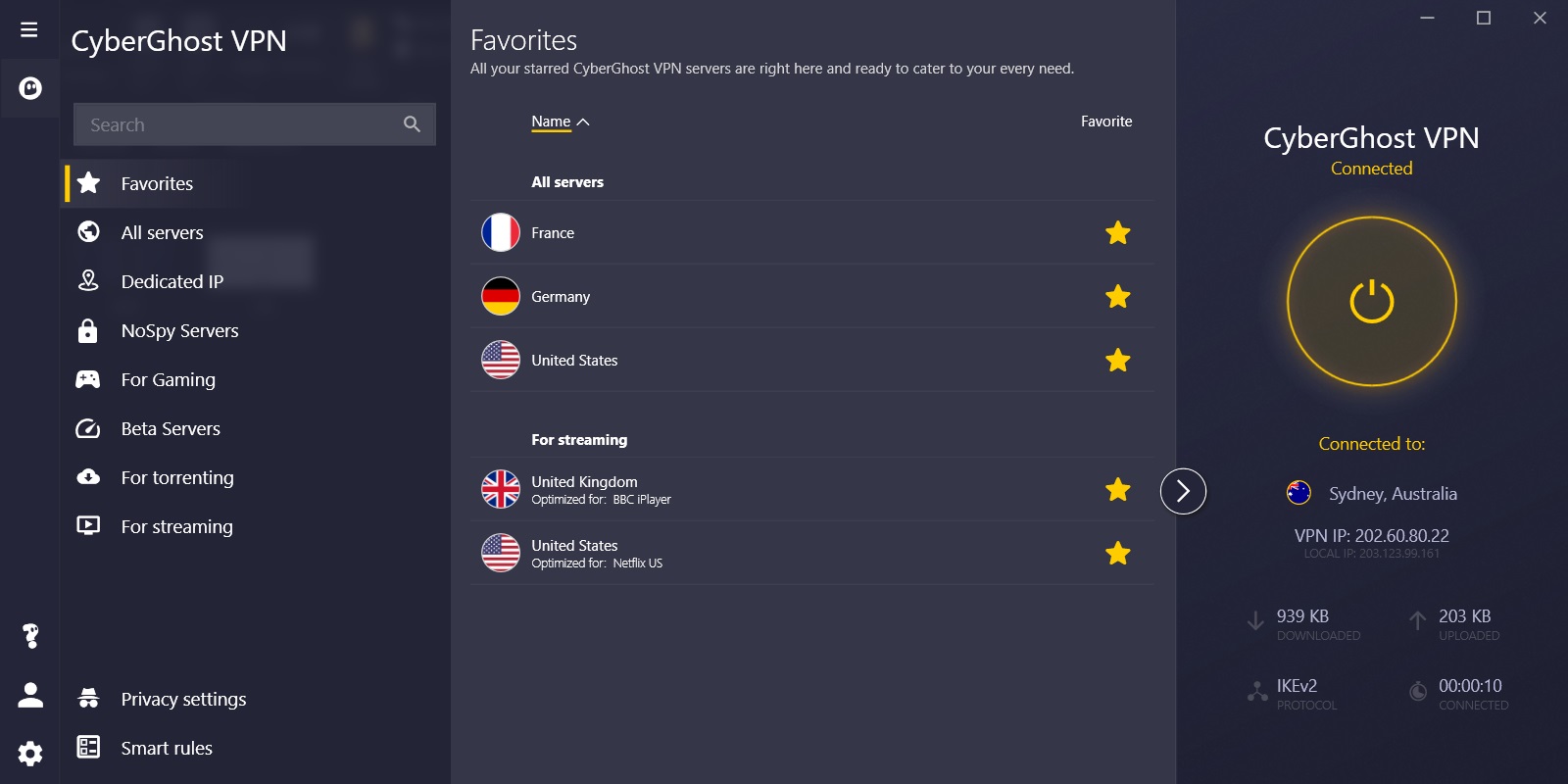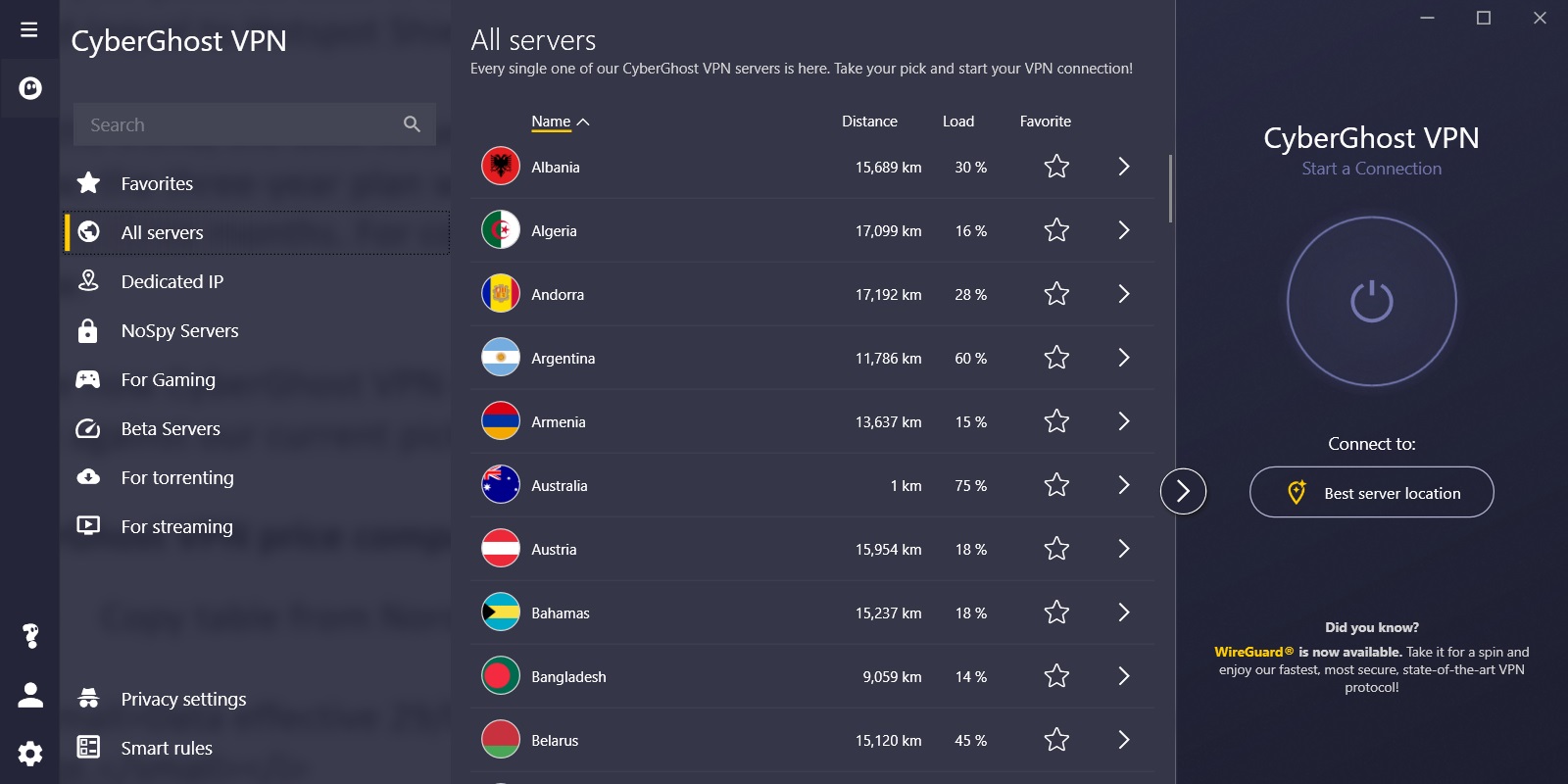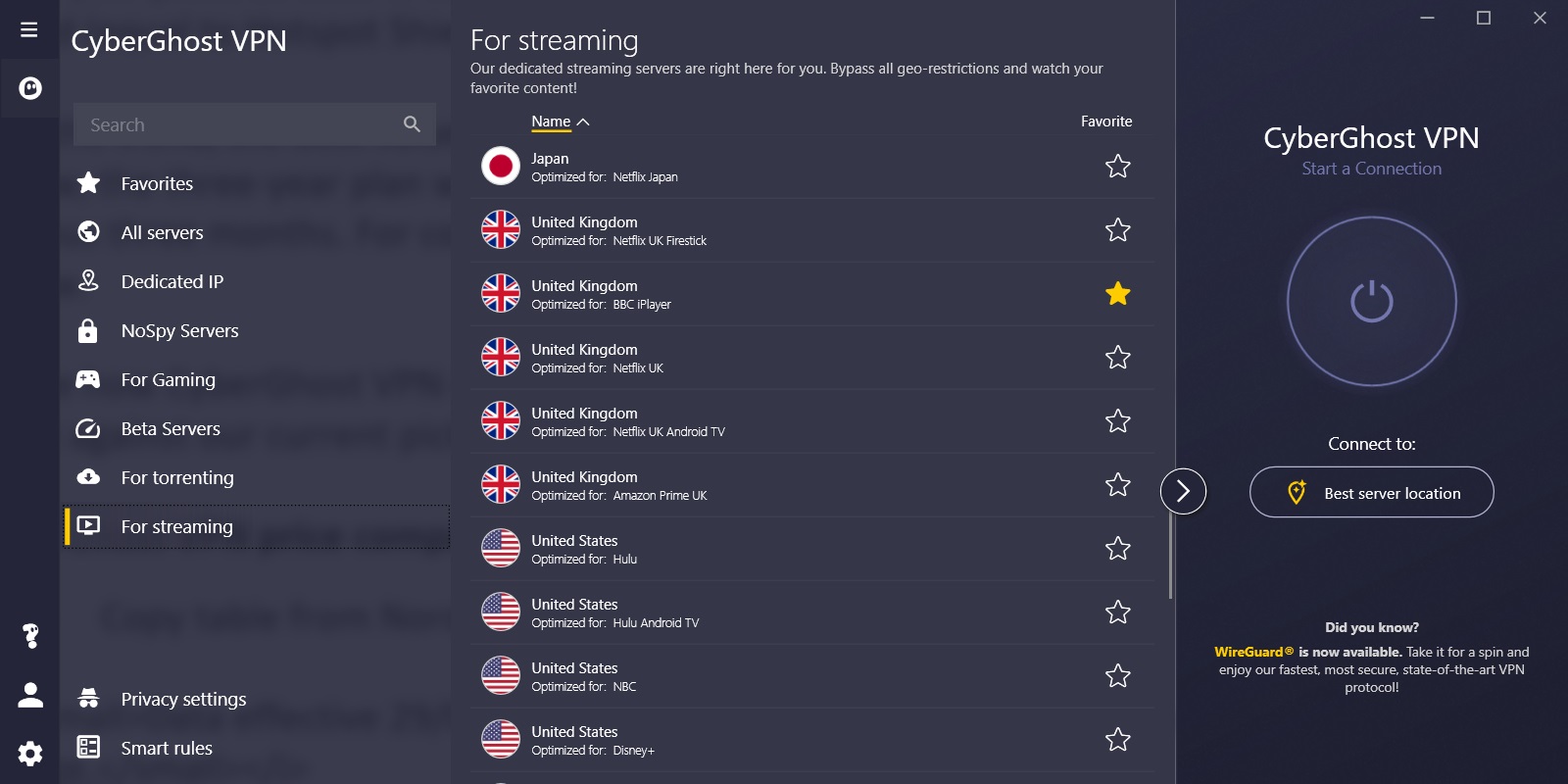Our current VPN gold standard is NordVPN (read our review here), but ExpressVPN (read our review here) isn’t too far behind. When it comes to speedsters, though, Hotspot Shield (read our review here) has incredibly fast download speeds, which is an area that CyberGhost is clearly keen to compete. The table below lists CyberGhost VPN’s four different payment options. As is the trend, the best value comes from spending the most but, at the time of updating this review, the three-year plan was only around $9 more than the two-year option, plus it had a bonus three months. That value is so great I bought the three-year plan to conduct this review, and, for those outside the US, it’s great to see a VPN charging in Australian dollars instead of US. To see how CyberGhost VPN compares to other VPN providers in terms of pricing, the table below pits it against our current pick of the top five VPN services. You can keep the software in a compact mode and simply use the large, obvious connection button to connect to a default nearby server, then tap it again to disconnect. Alternatively, expand the program for more options that the average user won’t need but are great for those who want to tinker. Search for servers by typing, add favorites, or browse from a full list of servers that list distance to your location and server load percentages. By default, there are optimized streaming servers for UK and US services preloaded into your favorites, but you can dig deeper down the list to find servers optimized for gaming, torrenting, or additional streaming options. While I had issues with PureVPN’s Australian servers, CyberGhost was such a great background VPN that I forgot I had it on during a half-hour Zoom call that didn’t skip a beat. Speaking of real-time online activities, CyberGhost connects and disconnects to local servers so fast that music streaming doesn’t skip a beat, and I only experienced a second of downtime (with no disconnection) in a Microsoft Teams when I switched CyberGhost off. There are some pauses when connecting to US servers, though. When you are connected to a server, whether selected manually or by default, CyberGhost VPN gives you convenient at-a-glance information. This includes the country and location, your VPN IP address, as well as the amount of data you’ve uploaded and downloaded, which sits above total connection time and your current connection protocol. The descriptive font beneath each of these values does bleed color-wise into the background, but that isn’t the case with the menus, which also let you send feedback from within the app, check account details (including the number of connected devices), and see what’s new on the CyberGhost website. The only real hiccup I had was a 10-minute period where the server list refused to load. Servers are located in 91 countries and with 7,900+ server options to choose from, you’re never short of choices. That server count puts CyberGhost VPN around 1,000 servers ahead of the nearest top-five competitor (PureVPN), more than 2,000 servers ahead of popular-pick NordVPN and has more than the combined server count of ExpressVPN and Hotspot Shield. It means if you happen to own a couple of laptops and smartphones, but your family also wants to connect using your account, it’s perfectly fine. And, you can trust that if you buy a new device you will have “open spots” for that gadget to connect as well. Below is a list of the devices and platforms that CyberGhost VPN officially supports with either native apps or manual configurations: The table below uses my Superloop NBN 100/40Mbps Fibre-to-the-Curb (FTTC) connection as a basis for comparing CyberGhost’s speeds for local and US servers (tests were performed during the middle of the day). Normally, when I manually connect to a Los Angeles server with a VPN, speeds are even better, but this bizarrely wasn’t the case with multiple LA servers with CyberGhost, all of which proved slower than the default San Francisco option. Not only were the download and upload speeds measurably worse, but the latency also went higher. The table below details which popular US and Australian streaming services play nice with CyberGhost VPN and how responsive they are for streaming video, according to my tests. As for Aussie streaming services, Kayo refused to load on the default Sydney and Melbourne CyberGhost servers, and I couldn’t manually connect to an Australian server that would load Kayo. Stan, on the other hand, was fast to load and fast to play with the default Australian server. The table below uses the best-case 14% download-speed variance when connecting to a CyberGhost US server and applies it to the average typical evening download speeds (TEDS) for providers across NBN fixed-line speed tiers. For practical context, the three columns on the right highlight the number of streams that can run simultaneously on a single account for popular US streaming services in 4K. While HBO Max allows for three simultaneous connections and Netflix stretches up to four, Hulu has an upgrade option for unlimited screens. The addition of torrenting-optimized servers for those who use peer-to-peer file-transfer services is a nice touch, as is 24/7 customer support if you have any questions. CyberGhost also offers a Smart DNS service that can be configured inside your ‘My CyberGhost’ login, plus three are premium upgrade options for a security suite, dedicated IP, and even a password manager. This account area is where you’ll also find a cookie cleaner extension for Chrome or Firefox, too. The two VPNs are close on a number of metrics including zero-logging policies, 24/7 support as well as the inclusion of a Smart DNS service, and split tunneling for advanced VPN users. For those who want to try before they buy, neither service has a true zero-dollar trial, but CyberGhost has a 45-day money-back guarantee for its longer-term plans whereas NordVPN taps out at 30 days. In terms of my tests, the two VPN services had comparable latency for Australian servers, while NordVPN had faster downloads and CyberGhost had better upload speeds. Latency and download speeds were effectively negligible for best-case US connections between the two, but CyberGhost was the clear winner when it came to faster upload speeds. While there are strong reasons to consider CyberGhost over NordVPN, I’d still recommend going with NordVPN as the better all-around VPN service, particularly when it comes to streaming.


